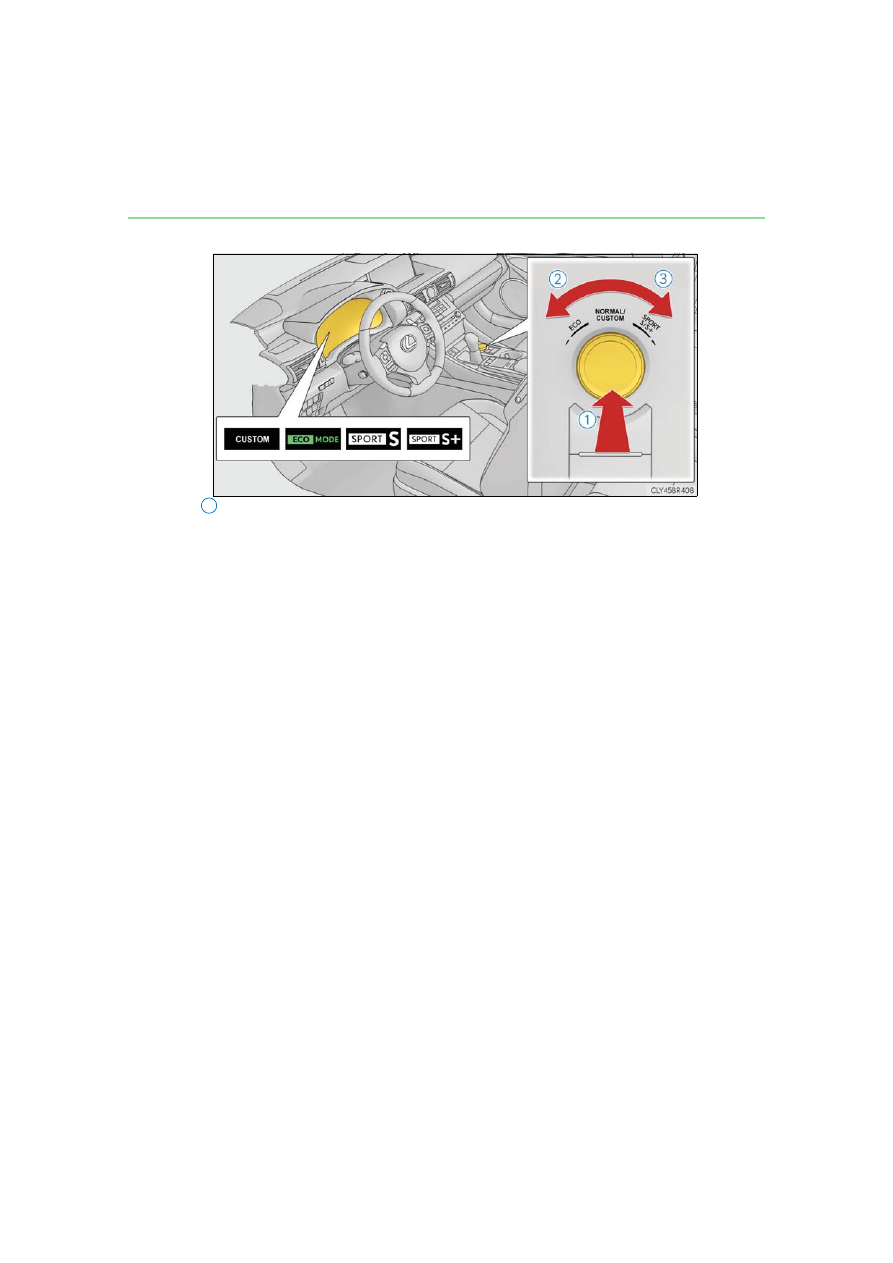LEXUS RC F (2019 year). Instruction - part 19

302
4-5. Using the driving support systems
RC F_U
RC350/RC300 (vehicles with Adaptive Variable Suspension System)
Normal mode/Custom mode
Normal mode and custom mode are selected by pressing the driving mode
select switch. Each time the switch is pressed, the driving mode changes
between normal mode and custom mode. When custom mode is selected,
the “CUSTOM” indicator will be illuminated.
When Eco drive mode or sport mode is selected, pressing the switch changes the
driving mode to normal mode.
• Normal mode
Provides an optimal balance of fuel economy, quietness, and dynamic per-
formance. Suitable for city driving.
• Custom mode
Allows you to drive with the following functions set to your preferred set-
tings.
Custom mode settings can only be changed on the drive mode customiza-
tion display of the Center Display.
(Displaying the drive mode customization display:
1